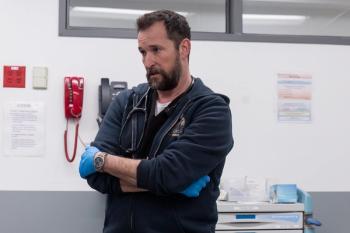
Hospitals see sicker patients, and higher costs, due to delayed care in pandemic
Many have postponed visiting doctors or seeking treatment for health problems. An American Hospital Association report says they’re requiring longer stays, adding to financial woes.
Some patients have delayed healthcare needs due to the COVID-19 pandemic, and both patients and hospitals appear to be paying the price.
The American Hospital Association says in a new
As a result, those patients are now showing up in hospitals with more severe health complications. They are requiring longer hospital stays, and that’s adding to
The average patient length of stay rose nearly 10% in 2021 compared to 2019, according to the report, which cited data from the Kaufman Hall consulting firm.
“Caring for sicker patients often requires more staff time, the use of more intensive treatments and higher cost drugs, as well as the need for more supplies and equipment,” the report states. “Combined with rapidly rising economy-wide inflation and reimbursement shortfalls, these mounting costs are threatening the financial stability of hospitals around the country.”
Patients with certain health issues are seeing much longer hospital stays, the AHA study found.
The average hospital stay for those with rheumatoid arthritis rose by 89%. The average stay jumped 65% for patients with neuroblastoma and adrenal cancer.
Hospitals continue to grapple with
Health systems and hospitals have had to turn “to contract labor firms charging exorbitant rates to hospitals for critical staff like nurses and respiratory therapists to help care for these sicker patients,” the AHA report states. Lawmakers have asked the White House to investigate to determine if
With health systems facing higher costs for labor and supplies, the hospital association is pressing lawmakers for more support. The AHA is asking Congress to stop Medicare payment cuts to hospitals, approve waivers to expand access to care and extend health coverage subsidies to prevent millions of Americans from losing coverage, which would add to the strain on hospitals and health systems.
Hospital labor costs were 12% higher in June than they were a year ago, according to the latest
“To say that 2022 has challenged healthcare providers is an understatement,” Erik Swanson, a senior vice president of data and analytics at Kaufman Hall, said in a statement earlier this month. “It’s unlikely that hospitals and health systems can undo the damage caused by the COVID waves of earlier this year, especially with material and labor costs at record highs this summer.”
Beyond the financial considerations, of course, patients are facing more difficult recoveries if they are postponing treatments and exams.
Researchers have found sharp drops in cancer screenings, according to a
Some delays in treatment defy explanation.





























































































